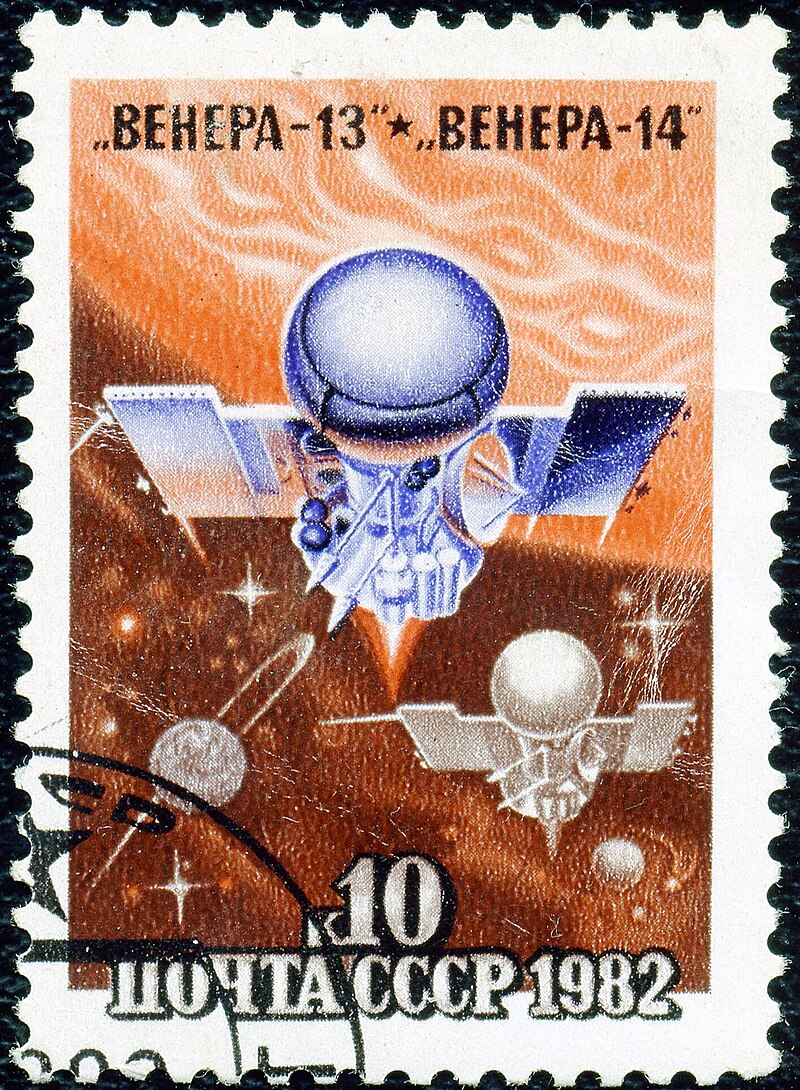Postage stamp of Venera 13/14
Venera 13 (Russian: Венера-13 meaning Venus 13) was a probe in the Soviet Venera program for the exploration of Venus.
Venera 13 and 14 were identical spacecraft built to take advantage of
the 1981 Venus launch opportunity and launched 5 days apart, Venera 13
on 30 October 1981 at 06:04:00 UTC and Venera 14 on 4 November 1981 at 05:31:00 UTC, both with an on-orbit dry mass of 760 kg.
(...)
After launch and a four-month cruise to Venus the descent vehicle
separated from the cruise stage and plunged into the Venusian atmosphere
on 1 March 1982. After entering the atmosphere a parachute was
deployed. At an altitude of about 50 km the parachute was released and
simple airbraking was used the rest of the way to the surface.
Venera 13 landed at 7.5°S 303°E, about 950 km northeast of Venera 14, just east of the eastern extension of an elevated region known as Phoebe Regio.
The lander had cameras to take pictures of the ground and spring-loaded
arms to measure the compressibility of the soil. The quartz camera
windows were covered by lens caps which popped off after descent.
The area was composed of bedrock outcrops surrounded by dark,
fine-grained soil. After landing, an imaging panorama was started and a
mechanical drilling arm reached to the surface and obtained a sample,
which was deposited in a hermetically sealed chamber, maintained at 30
°C and a pressure of about 0.05 atmosphere (5 kPa). The composition of
the sample determined by the X-ray fluorescence spectrometer put it in
the class of weakly differentiated melanocratic alkaline gabbroids.
The lander functioned for 127 minutes (the planned design life was 32
minutes) in an environment with a temperature of 457 °C (855 °F) and a
pressure of 89 Earth atmospheres (9.0 MPa). The descent vehicle
transmitted data to the satellite, which acted as a data relay as it
flew by Venus.
in Wikipédia





Sem comentários:
Enviar um comentário